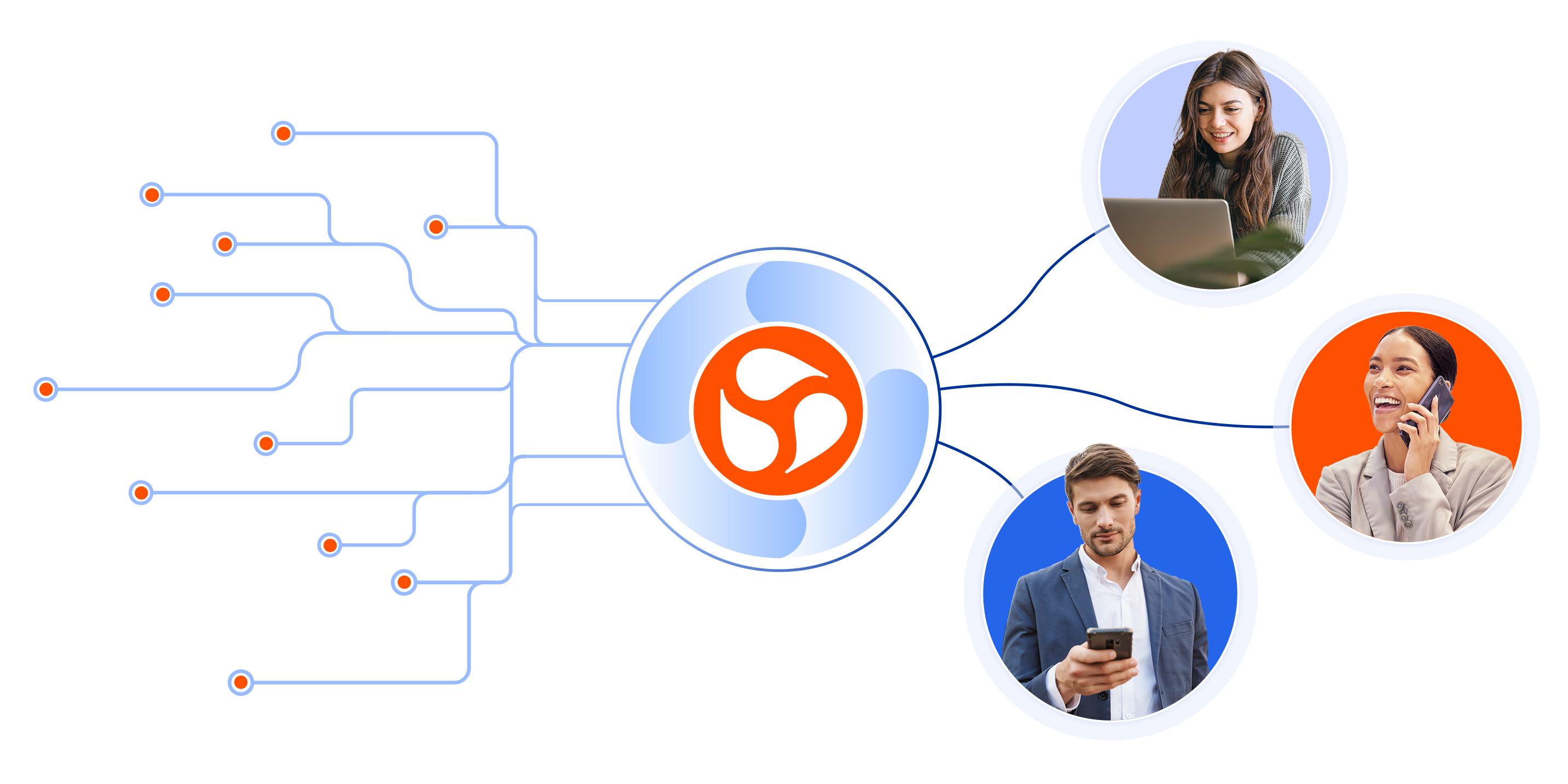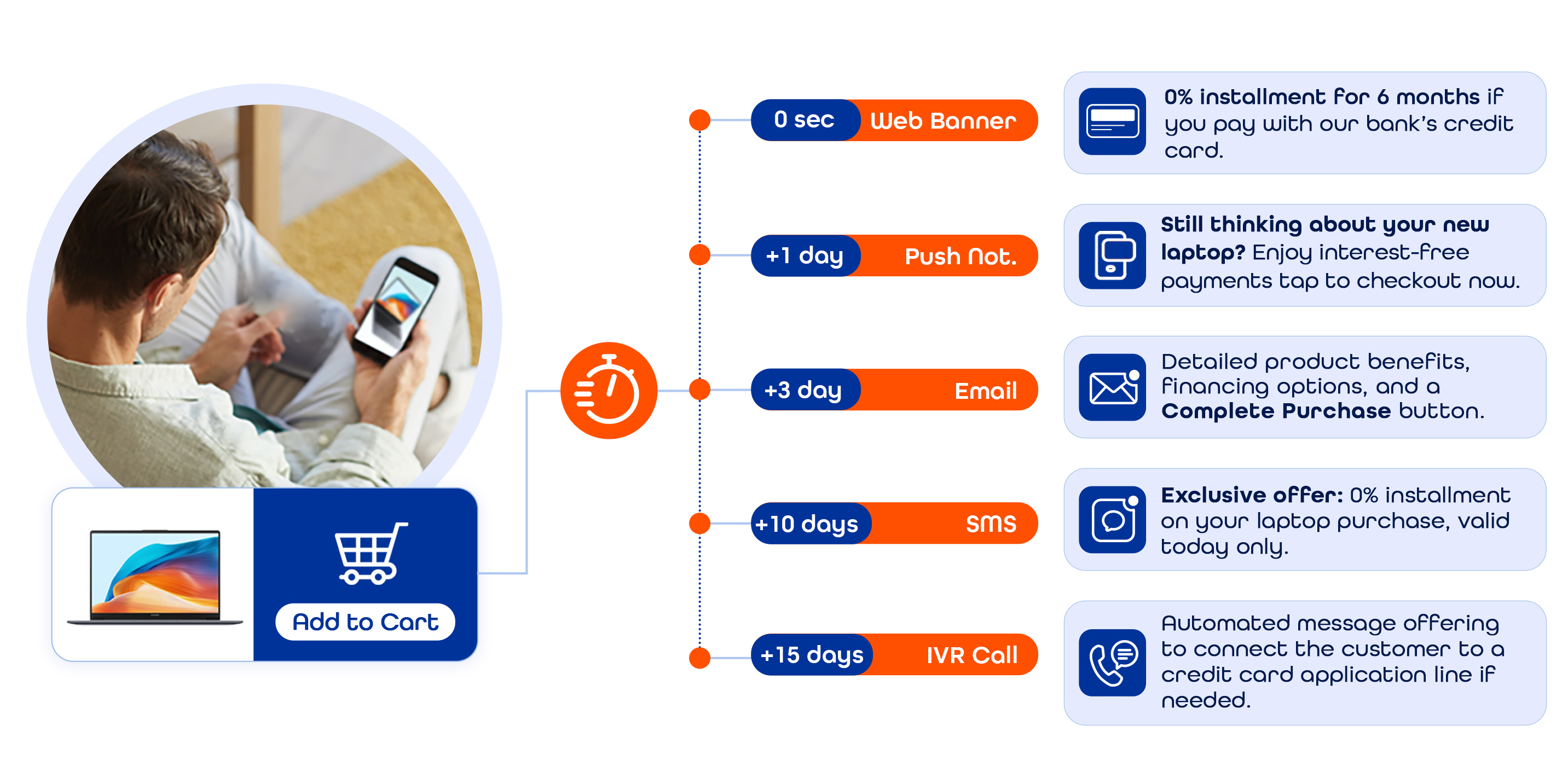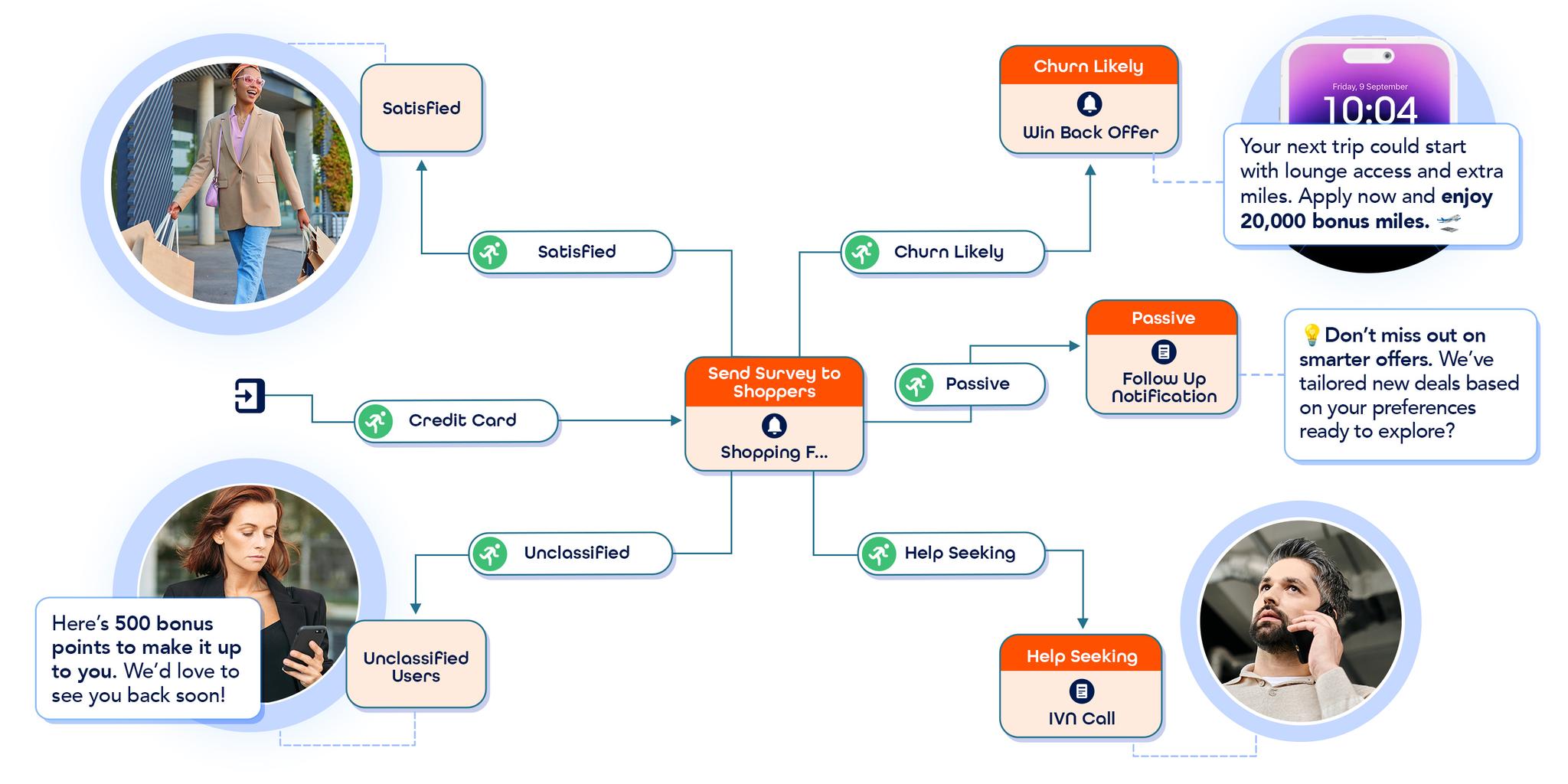- What Is Data-Driven Personalization?
- Moving Beyond Basic Segmentation
- Why Personalization Matters for Modern Customers
- The Power of a Unified Customer Profile
- Building a Unified Customer View
- Benefits of Unified Customer Data for Marketing
- Real-Time Personalization: Meeting Customers in the Moment
- Examples of Real-Time Personalization Across Industries
- How Real-Time Data Enhances Engagement
- Personalization in Digital Marketing
- Email, Ads, and Content Tailored to Data
- Personalization in Marketing Automation at Scale
- What Is a Data Platform’s Role in Personalization?
- How Data Platforms Enable Unified Profiles
- Real-Time Analytics and Scalable Personalization
- The Future of UX Personalization
- AI & Machine Learning in Personalization
- Predictive Insights from Unified Customer Data
- Conclusion: Why Data-Driven Personalization Drives Growth
- Key Takeaways for Businesses
- Next Steps for Implementing Personalization
In today’s experience-driven digital economy, personalization is no longer optional—it’s a competitive necessity. Customers expect seamless, tailored interactions across every touchpoint. Businesses must go beyond basic segmentation to truly meet individual needs. This is where data-driven personalization takes center stage.
What is Data Driven Personalization
Personalization has become the cornerstone of modern marketing, but today’s customer expectations demand more than simply using a first name in an email. Data-driven personalization uses customer data to deliver highly relevant, timely, and meaningful experiences at every stage of the journey.
Moving Beyond Basic Segmentation
Traditional segmentation relies on broad categories, but this approach often misses the nuances of individual behavior. Data-driven personalization goes further, using unified customer data to deliver experiences based on browsing habits, purchase history, and real-time actions.
Why Personalization Matters for Modern Customers
When customers feel understood, they engage more deeply. Personalization strengthens loyalty, increases conversions, and drives sustainable growth. Businesses that prioritize data-driven personalisation create stronger, more authentic connections with their audience.
The Power of a Unified Customer Profile
At the heart of effective personalization is the unified customer profile. By consolidating data from multiple touchpoints—websites, mobile apps, CRM systems, and even offline interactions—businesses gain a unified customer view.
Building a Unified Customer View
A unified customer profile captures preferences, purchase patterns, and behavior in one place. This ensures consistency across every interaction and eliminates the risk of disjointed messaging. For a deeper look at how orchestrating seamless, end‑to‑end customer journeys can elevate personalization and loyalty, check out Benefits of Creating End‑to‑End Customer Journeys.
Benefits of Unified Customer Data for Marketing
✅ More precise audience segmentation
✅ Streamlined cross-channel personalization
✅ Better collaboration across teams
✅ Increased customer trust and loyalty
Unified customer data transforms marketing from generic to truly personal, elevating the customer experience.
Real-Time Personalization: Meeting Customers in the Moment
Modern customers don’t just want relevance—they expect it in real-time. Real-time personalization (or real-time personalisation) adapts content and offers instantly, based on live customer actions. For powerful mobile-specific use cases—like dynamic CTAs, behavior-driven segmentation, and context-triggered onboarding—check out our blog: ‘Real‑Time Personalization Strategies to Increase Mobile App Conversions.’
Examples of Real-Time Personalisation Across Industries
✅ E-commerce: Product recommendations that update as a customer browses.
✅ Streaming services: Content suggestions based on viewing history.
✅ Financial services: Personalized financial advice triggered by recent transactions.
How Real-Time Data Enhances Customer Engagement
By reacting to customers’ behavior in the moment, brands can deliver timely, relevant messages that improve satisfaction and significantly increase conversion rates.
Personalization in Digital Marketing
Personalization in digital marketing has moved from a “nice-to-have” to a business imperative. Campaigns powered by data outperform generic campaigns in engagement, loyalty, and ROI.
Email, Ads, and Content Tailored to Customer Data
From personalized subject lines to dynamic website content, marketers can use unified customer data to create experiences that feel tailor-made. Even paid advertising benefits from personalization, as ads can be aligned with specific customer profiles.
Personalization in Marketing Automation at Scale
With personalization in marketing automation, businesses can deliver 1:1 experiences across thousands of customers. Automated systems adapt in real-time, ensuring every customer receives relevant offers, product recommendations, and messages at the right moment.
What Is a Data Platform’s Role in Personalization?
You might wonder: what is a data platform, and why is it essential for personalization? Simply put, a data platform is the technology backbone that collects, integrates, and activates customer data.
How Data Platforms Enable Unified Customer Profiles
By pulling data from all touchpoints into a single system, data platforms create a unified customer profile. This ensures marketers work with accurate, complete data when personalizing campaigns.
Real-Time Analytics and Scalable Personalization
Data platforms power real-time personalization by analyzing live interactions. They also support marketing automation at scale, ensuring businesses can deliver consistent experiences even as customer bases grow.
Why evamX is the Best Option for Real-Time Personalization
While many platforms promise personalization, few can deliver it in real time and at scale. This is where evamX stands apart. Built as a high-performance customer engagement platform, evamX enables businesses to process millions of customer interactions per second and transform them into meaningful, personalized experiences instantly.
Key Advantages of evamX
✅ Real-Time Data Processing: evamX ingests and analyzes streaming data the moment it happens, ensuring brands can respond to customer actions without delay.
✅ Hyper-Personalized Experiences: By unifying customer data with live behavioral signals, evamX empowers businesses to deliver 1:1 personalization that feels immediate and relevant.
✅ Scalability at Enterprise Level: Whether you’re managing thousands or millions of customers, evamX is designed to handle high volumes of interactions while maintaining performance.
✅ Cross-Channel Orchestration: From mobile apps to email, SMS, push notifications, and web, evamX ensures that personalization flows seamlessly across every touchpoint.
✅ AI-Driven Intelligence: With built-in AI and machine learning, evamX not only personalizes in real time but also predicts what customers will need next.
Why Businesses Choose evamX
In a world where customer expectations evolve faster than ever, evamX gives businesses the agility to meet customers where they are—in the moment. By bridging the gap between data collection and customer engagement, evamX helps brands strengthen loyalty, boost conversions, and gain a decisive competitive advantage.
If personalization is the foundation of modern marketing, evamX is the engine that powers it.
The Future of User Experience Personalization
Personalization is evolving rapidly, thanks to AI and predictive analytics.
AI and Machine Learning in Personalization
Machine learning allows businesses to anticipate customer needs, recommend products before they’re searched for, and personalize content automatically.
Predictive Insights from Unified Customer Data
By analyzing unified customer data, businesses can forecast trends, identify emerging preferences, and proactively adapt strategies—keeping them competitive in a fast-changing digital landscape.
Conclusion: Why Data-Driven Personalization Drives Growth
Data-driven personalization is no longer optional—it’s the foundation of modern marketing success. Businesses that build a unified customer profile, leverage real-time personalization, and integrate personalization into their digital marketing and automation strategies will create stronger customer relationships and achieve long-term growth.
Key Takeaways for Businesses
- A unified customer view unlocks consistent, relevant personalization.
- Real-time personalization boosts engagement and conversions.
- Personalization in marketing automation ensures scalability.
- A data platform is the engine that powers it all.
Next Steps for Implementing Personalization
Start by consolidating customer data into a unified profile. From there, invest in tools that support real-time personalization and marketing automation. By embracing data-driven personalisation, your business will not only meet customer expectations—but exceed them.
Frequently Asked Questions (FAQ)
1. What is data-driven personalization and how is it different from traditional personalization?
Data-driven personalization goes far beyond simple tactics like using a customer’s first name in an email. It leverages real-time customer data—such as browsing history, purchase behavior, and preferences—to create highly relevant, timely, and meaningful experiences across every stage of the customer journey. Unlike traditional segmentation, which uses broad categories, data-driven personalization captures individual nuances to deliver 1:1 experiences that feel truly personal.
2. Why is personalization so important in today’s digital landscape?
Modern customers expect brands to understand them deeply and respond to their needs in real-time. Personalization strengthens brand loyalty, improves engagement, and boosts conversion rates. By showing customers that their preferences and behaviors are recognized and acted upon, brands foster stronger emotional connections that drive long-term growth.
3. How does a unified customer profile support personalization efforts?
A unified customer profile brings together data from all customer touchpoints—websites, apps, CRM tools, and offline interactions—into one comprehensive view. This enables brands to deliver consistent, seamless experiences across channels and ensures that each message or offer is informed by the full context of a customer’s journey, rather than isolated data points.
4. What role does real-time personalization play in improving customer experience?
Real-time personalization allows businesses to respond instantly to live customer behavior. For example, product recommendations can update dynamically as a user browses, or personalized onboarding messages can trigger in-app based on specific actions. This level of responsiveness enhances customer satisfaction, increases conversion, and sets brands apart in competitive markets.
5. How is personalization integrated into digital marketing channels like email, ads, and content?
Unified customer data powers the personalization of email subject lines, ad creatives, dynamic website content, and more. With data-driven strategies, marketers can tailor every touchpoint to match individual preferences, making communications feel more relevant and increasing the likelihood of engagement and action.
6. In what ways does marketing automation enable personalization at scale?
Marketing automation platforms use customer data to trigger personalized messages, offers, and product recommendations for thousands of customers simultaneously. These systems adapt in real time, ensuring that every individual receives content tailored to their behavior, preferences, and stage in the buying journey—without manual effort.
7. What is a data platform and how does it enable scalable personalization?
A data platform acts as the technological foundation for collecting, integrating, and activating customer data across all sources. It creates unified customer profiles, enables real-time analytics, and supports scalable marketing automation. This ensures that brands can personalize consistently and intelligently as they grow and evolve.
8. How are AI and machine learning shaping the future of personalization?
AI and machine learning help brands move from reactive to predictive personalization. By analyzing unified customer data, these technologies can anticipate customer needs, automatically recommend products or content, and identify behavioral patterns that inform proactive engagement strategies—ensuring businesses stay one step ahead in delivering value.










